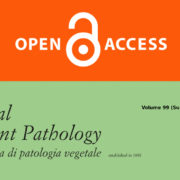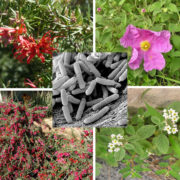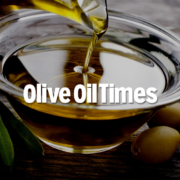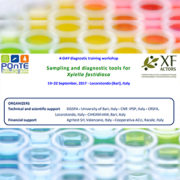Proceedings of the XXIII National Congress of the Italian Phytopathological Society – SIPaV, Piacenza, Italy, 4-5 October 2017
Authors
Affiliations
(1) Università degli Studi di Bari Aldo Moro, Dipartimento di Scienze del Suolo, della Pianta e degli Alimenti, 70126 Bari, Italy.
(2) CNR-Istituto per la Protezione Sostenibile delle Piante (IPSP), 70126 Bari, Italy.
(3) CNR-Istituto di Chimica dei Composti Organo Metallici (ICCOM), 70126 Bari, Italy.
Abstract Poster Presentation
Xylella fastidiosa (Xf) is a xylem-limited bacterium, regulated as a quarantine pest, that is causing a devastating disease on olive crops in the southern area of Apulia (Italy) and whose potential spread in the Mediterranean area poses a severe threat to EU agriculture and landscape environment.
Xf virulence is related to the expression of a cluster of rpf (regulation of pathogenicity factors) genes responsible for a signalling system based on small fatty acid molecules called DSF (Diffusible Signalling Factor). Since DSF regulation is involved in pathogenicity traits of Xf and biofilm formation, a “pathogen-confusion” strategy, based on the alteration of DSF levels in planta, has been proposed to contrast bacterial infection. In grapevine, the strategy is based on the transgenic expression of the rpfF gene, which encodes the DSF-synthase.
We are attempting to express the rpfF gene of the olive-infecting Xf strain CoDiRO in the heterologous Escherichia coli system. The gene product has been successfully detected by Western blot analysis in cell protein extracts. Chemical characterisation by Gas Chromatography-Mass Spectrometry analysis of the DSF molecules produced by this expression system, in addition to those naturally produced by Xf CoDiRO, are underway.
Concurrently, a TMV-based vector has been engineered to harbour the same rpfF gene and induce its transient expression in planta. Biologically active transcripts of the vector have been inoculated to Nicotiana tabacum and N. benthamiana plants, to establish a model system on herbaceous hosts. RpfF expression was successfully proved by Western blot analysis, whereas movement and systemic colonisation of plant tissues were evaluated by RT-PCR assays. The same viral vector harbouring GFP in replacement of rpfF is used as a control. Following inoculation with Xf CoDiRO bacterial cells the system is now being tested to monitor the persistence of DSF expression and its efficacy to lower disease susceptibility or movement of bacterial cells behind the point of inoculation.
This work received funding from the European Union’s Horizon 2020 research and innovation programme under grant agreement No. 635646, POnTE (Pest Organisms Threatening Europe).
Published on October 20, 2017 by JOURNAL OF PLANT PATHOLOGY









